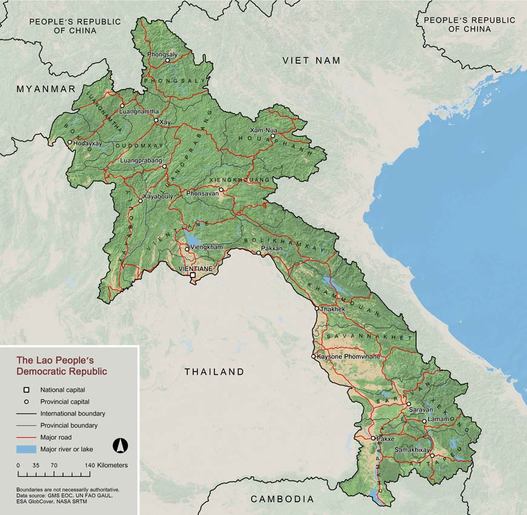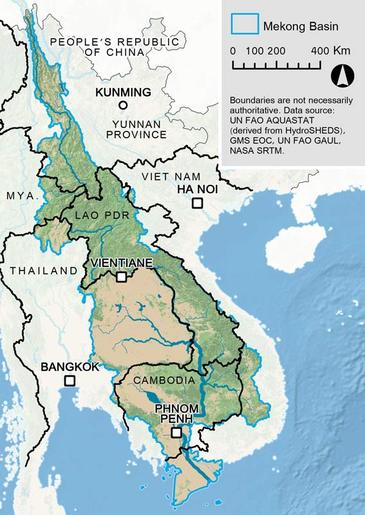Savannakhet Province, Lao People’s Democratic Republic (PDR), is a small area that is connected to Thailand, other areas of Lao PDR, and Vietnam via road No. 9. This province has been increasingly affected by carbon dioxide (CO2) emitted from the transport corridors that have been developed across the region. To determine the effect of the CO2 increases caused by deforestation and emissions, the total above-ground biomass (AGB) and carbon stocks for different land-cover types were assessed. This study estimated the AGB and carbon stocks (t/ha) of vegetation and soil using standard sampling techniques and allometric equations. Overall, 81 plots, each measuring 1600 m2, were established to represent samples from dry evergreen forest (DEF), mixed deciduous forest (MDF), dry dipterocarp forest (DDF), disturbed forest (DF), and paddy fields (PFi). In each plot, the diameter at breast height (DBH) and height (H) of the overstory trees were measured. Soil samples (composite n = 2) were collected at depths of 0–30 cm. Soil carbon was assessed using the soil depth, soil bulk density, and carbon content. Remote sensing (RS; Landsat Thematic Mapper (TM) image) was used for land-cover classification and development of the AGB estimation model. The relationships between the AGB and RS data (e.g., single TM band, various vegetation indices (VIs), and elevation) were investigated using a multiple linear regression analysis. The results of the total carbon stock assessments from the ground data showed that the MDF site had the highest value, followed by the DEF, DDF, DF, and PFi sites. The RS data showed that the MDF site had the highest area coverage, followed by the DDF, PFi, DF, and DEF sites. The results indicated significant relationships between the AGB and RS data. The strongest correlation was found for the PFi site, followed by the MDF, DDF, DEF, and DF sites.
remotesensing-06-05452.pdf (1 MB)

